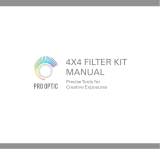
5
Unique Hasselblad Natural Color Solution
In the past, color management solutions have imposed limitations on professional digital pho-
tographers, because of the need to choose a specific color profile to suit a specific job in order
to capture various skin tones, metals, fabrics, flowers, etc. Hasselblad has helped solve this
dilemma, with the development of a single powerful color profile to be used with its Phocus
imaging software. Working with the new Hasselblad Natural Color Solution (HNCS) enables
you to produce outstanding and reliable out-of-the-box colors, with skin tones, specific prod-
uct colors and other difficult tones reproduced easily and effectively.
Instant Approval Architecture
Limitless digital image capture loses some of its potential if the photographer cannot quickly
review and select the best images to present to the client. Building on the success of its Audio
Exposure Feedback technology, Hasselblad has created Instant Approval Architecture (IAA),
an enhanced set of feedback tools, designed to liberate the photographer to focus on the
shoot rather than the selection process. IAA triggers audible and visual signals for each image
captured, notifying the photographer immediately of its classification status. The information
is recorded both in the file and in the file name, providing a quick and easy way to classify and
select images, in the field or in the lab. The Hasselblad Instant Approval Architecture brings
automated image classification into your digital workflow from the split-second of capture.
IAA is a Hasselblad trademark and Hasselblad has a patent pending on the invention. Large
enhanced display screens on the new Hasselblad products provide a realistic, high quality and
perfect contrast image view, even in bright sunlight, to allow instant on-site image approval.
3FR format
In order to incorporate the unique HNCS feature we have developed a custom Hasselblad
raw file format called 3F RAW (3FR). The new 3FR file format is designed to ensure that images
captured on Hasselblad digital products are quickly, effectively and safely stored on the avail-
able media. This file format includes lossless image compression, which reduces the required
storage space by 33%. The 3FR file defines the colors in the Hasselblad RBG color space with
its out-of-the-box quality, and used in conjunction with Phocus it removes both the need for
experimenting with different color profiles to obtain optimal colors and the need for selective
color corrections.
Phocus
Phocus offers an image processing workflow with the highest degree of control. In tethered
operation, tools like overlay masking help bring productivity to advanced set composition.
Phocus processes the raw 3FR files generated by the Hasselblad 503CWD and CFV. It runs na-
tively on both Macintosh and Windows platforms and is licensed to allow you to provide free
copies for all your co-workers and production partners.
DAC
Images captured with a CFV and Carl Zeiss C series lenses can claim the tremendous benefits
of DAC. This feature, incorporated in Phocus, makes lens model-specific corrections to ensure
the ultimate image quality.
Your new Hasselblad camera provides access to the Hasselblad potential. The realization of
this potential is only dependant upon your skill, care and judgement as a photographer. We
wish you great success and welcome you to Hasselblad, the most comprehensive medium-
format system in the world.
The supreme Hasselblad potential is there, it’s up to you to exploit it!























